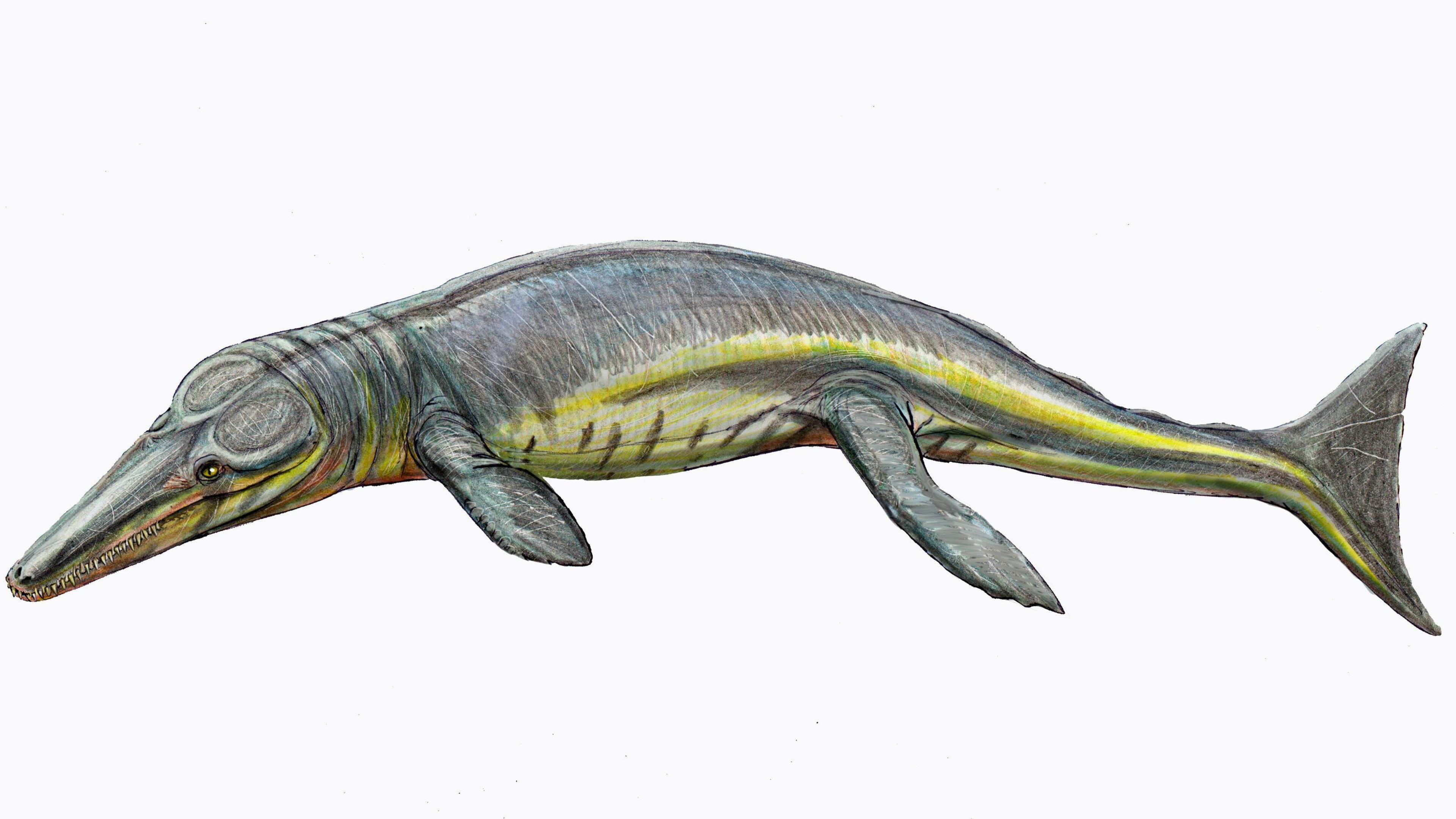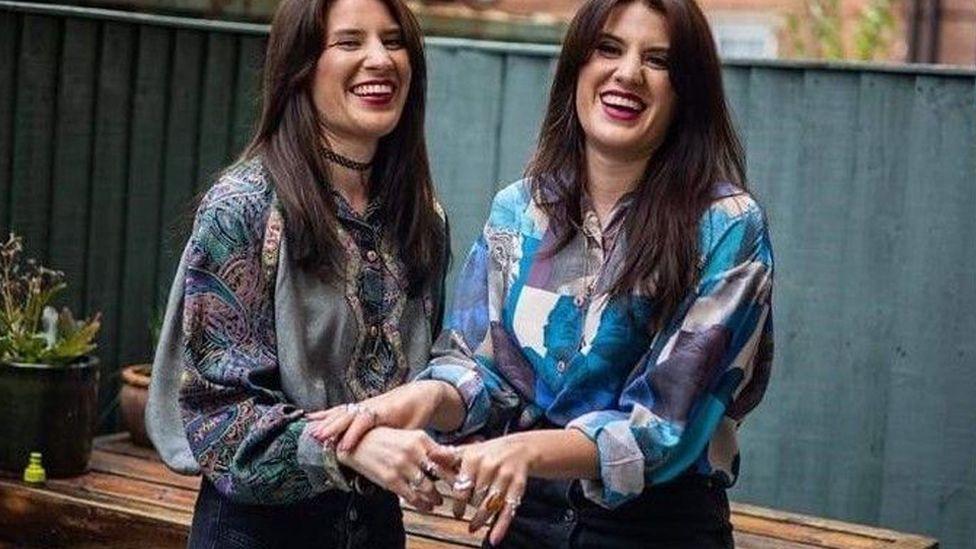Why can't a crocodile dive deep into water?

Thalattosuchians were the prehistoric ancestors of crocodiles, the researchers said
- Published
The sinuses of the prehistoric ancestors of crocodiles prevented them from evolving into deep divers like whales and dolphins, scientists have found.
The researchers from Southampton and Edinburgh Universities compared thalattosuchians, which lived at the time of the dinosaurs, with the predecessors of cetaceans, such as whales.
The scientists explained those cetaceans evolved from land-dwelling mammals.
During this process, which took 10m years, their bone-enclosed sinuses reduced and they developed sinuses and air sacs outside of their skulls.
That meant dolphins could reach depths of hundreds of metres under the sea and whales thousands of metres without damaging their skulls.
Lead author Dr Mark Young, who works at the University of Southampton, said thalattosuchians became extinct in the Early Cretaceous period, between 145m years ago and 100.5m years ago.
“We'll never know for sure if given more evolutionary time they could have converged further with modern cetaceans or whether the need to mechanically drain their salt glands was an impassable barrier to further aquatic specialisation," he said.
The team scanned sinuses of 11 thalattosuchian skulls, as well as the skulls of 14 modern crocodile species and six other fossil species.
They found that brain-case sinuses reduced across thalattosuchian evolution as they became more aquatic, in a similar way to those of whales and dolphins, possibly for diving and feeding.
But the team also found that once thalattosuchians became fully aquatic, their snout sinuses expanded compared to their ancestors.
The team's paper was published in the journal Royal Society Open Science.
Get in touch
Do you have a story BBC Hampshire & Isle of Wight should cover?
You can follow BBC Hampshire & Isle of Wight on Facebook, external, X (Twitter), external, or Instagram, external.
- Published30 August 2024

- Published11 August 2024

- Published15 March 2012